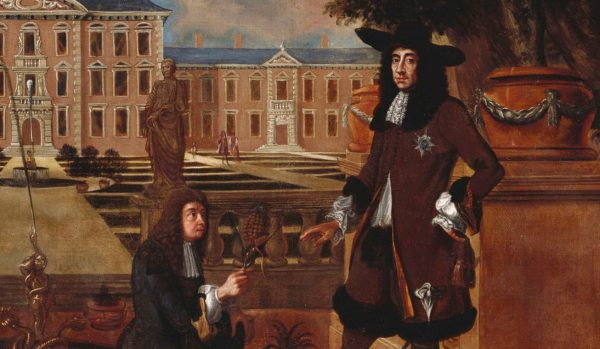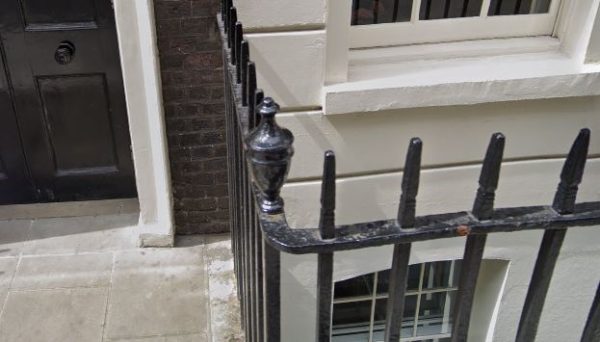There was a time when people didn’t eat pineapples but would rent them for display only and send them back the next day.
It’s all down to the fact that pineapples used to be hugely desirable and also hugely expensive — far too expensive to eat, so people would rent one, and even that was seen as sign of wealth, for the rental wasn’t cheap either.
Pineapples are native to South America and first probably appeared in England in Elizabethan times, but shipping them across the Atlantic was exceptionally difficult. So they remained little more than an exotic curiosity for over a century.
Attempts were made to grow them in the UK, but they need heat and humidity, neither of which are in abundance in this country. But they could be grown in heated greenhouses which were starting to appear by the time Charles II.
What is thought to have been the first pineapple cultivated in England cost a king’s ransom, which is appropriate as it was the gardens of King Charles II that produced the first one. Imports from France started around 300 years ago, but still only for the nobility to afford.
The race was now on, and the landed gentry were determined to grow their own – or more accurately, told their staff to grow them.
A number of landed estates constructed special hothouses, called pineries to grow the exotic fruit, and one of the reasons why it needed a landed estate as opposed to say a large city mansion is horse shit – the hothouses were actually a trough in the ground for the plants, and two more either side packed with rotting horse manure, which gives off a lot of heat when it decomposes. You needed a lot of horses to do the necessary to fill those troughs.
The richest fruit in the Kingdom was grown from the heat of rotten shit.
By the turn of the 19th century, pineapples were being grown commercially, but were still staggeringly expensive, so the rising middle classes seeking to emulate the dinner parties of the rich would often rent a pineapple instead of buying one.
It would be seen a sign of wealth and good taste to be able to procure such an exotic item for the dinner party, even if all people could do was look at it. Not unlike renting a formal suit for a dinner party today.
The pineapple sent back the following day would be rented out repeatedly until nature took its inevitable toll on the poor fruit.
The pineapple itself became a satire for luxury in language – Sheridan’s comedy of manners, The Rivals sees Mrs Malaprop exclaim: “He is the very pineapple of politeness”.
However over time, the cost of the fruit declined from outrageous to merely very expensive, and people started even eating them, occasionally.
A later satire on the decadence of Victorian life The cabinet dinner, or, a political meeting by Charles Williams shows two pineapples on the table, and one is only half-eaten as the guests snore off a rich repast.
The way that most people could experience the pineapple, other than looking at it, was in jam – imports of pineapple jams from South America began around the 1830s, and being far more likely to survive the journey they became a popular modest luxury that the middle-classes could afford.
However, the fruit was to make a permanent addition to Londoner’s lives – in architecture.
Although the landed gentry had already been immortalizing the fruit on their estates, with huge cupola or stone sculptures, with the pineapple often being a symbol of hospitality, which owes its origins to how pineapples could be found hanging outside homes in South America as a welcome sign.
So here in the UK, the pineapple also started to find its way onto gates and railings around urban houses.
That’s why you will see thousands of small black pineapples all around London today – on Georgian and Victorian railings, on the tops of buildings, in fact, almost anywhere you look, there are pineapples.
There’s even an entire pub known for its pineapples, and Sir John Soane has one on his tomb. a tomb that is its claimed then went on to inspire the classic red telephone box — which is probably why they are usually plastered with rather fruity advertising cards.
Look up, and you’ll spot them on top of buildings, such as the National Gallery, where the lantern above the main entrance is a gigantic pineapple.
It was still a luxury fruit, but thanks to ironmongery and stone carving, one that could be found on every street and around every corner.
Improvements in shipping, particularly steamships made transporting pineapples across the Atlantic a viable commercial operation, and the English pineapple swiftly died out.
It was the 1900s that saw mass cultivation of the pineapple, in Hawaii, which was to dominate the production of tinned pineapples until the 1970s when refrigerated transport made shipping the fruit itself viable at last.
Once a luxury that few could dream of seeing, let alone eating, and one that would become a familiar sight on London’s streets and architecture, today it’s sold in tins and served on pizza. Oh, how the mighty have fallen.












If you had written this on 01/04 I would have thought it a joke. I had to double and then triple check you hadn’t made this up.
..and wasn’t it a Pine Apple rather than pineapple ❓
Reminds me of a red headed secretary I once had. Ha, she would pile her bright red hair up on top of her head and say she looked like a pineapple 🍍
Thanks for a good article,
😎
Looks like an article written for Gammons ….. 🍍🍍
Mrs Malaprop used words that were similar but wrong, she was trying to say “the very pinnacle of politeness” – it’s nothing to do with luxury, just that she knew both words and mixed them up.
When the Queen got married in 1947, the government of Queensland sent 500 cases of tinned pineapples as a wedding present, obviously intending them to be distributed to the public.
https://www.smh.com.au/lifestyle/queenslands-prickly-royal-wedding-gift-20110426-1durq.html